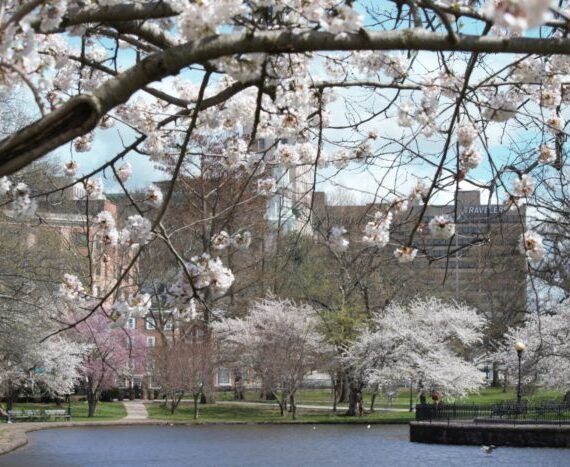There were only a handful of us, but we were affiliated with a much larger, older group. We would wear all black, or at least black shirts. We wore black eyeliner, crimson lipstick, and black boots. Our symbol was written on all of our textbooks and sometimes on bathroom walls. We called ourselves the Bitches Against Rules. Some of us stole liquor from our parents. One brought kittens to school. We argued over who would marry Axl Rose (not me) and who got stuck with Slash (me). At worst, some of us smoked cigarettes or drank underage. At best, we scared the crud out of our too straightlaced suburban peers whose musical tastes were only as developed as New Kids on the Block.
I never considered myself a part of a gang, but using the criteria described in the recent 5 billion 138 gangs in Hartford controversy, I guess I have to now come to terms with knowing that my adolescent and teenage behavior would have had me labeled as a gang member.
In the 16 October 2009 Hartford Courant article, “Hartford Police Memo Cites ‘Alarming Increase’ In Gang Recruitment In Schools,” some of the criteria are outlined:
Police Chief Daryl K. Roberts cautioned Thursday that the memo doesn’t distinguish enough between “formal gangs” rooted in crime and “informal gangs” arising out of a sense of belonging: “Ten guys on the block, let’s all put on red jackets, and now we’re a gang,” he said.
People break themselves into groups, whether it is by street, neighborhood, city, baseball team affiliation, school, or sorority/fraternity. Most people know that it is possible to distinguish between cliquishness, spirit/pride affiliations, and organized crime. So, it’s not too demanding to ask that people use a little common sense when looking at the gang issue; are all of these kids in “gangs” really a threat to themselves and others, or are they being typical, cliquish teens?
My concern in all of this is the way in which we continue to approach youth as if they are all criminals. I say “continue” because this is not new. And it’s not acceptable. As Kirsten Levingston writes:
We are quick to attach ferocious, explosive labels to adolescents that purport to explain their behavior but instead reinforce our impulse to pull away from our kids. What drives this impulse is a pervasive, but nonetheless unfounded, fear of adolescents.
Novella Carpenter, author of Farm City: The Education of an Urban Farmer, writes of her experience growing vegetables and raising poultry in an Oakland neighborhood that could easily be in any number of places here, excepting the climate difference. In it, she describes her mission to harvest wildly growing weeds for her chickens, but how she must conquer her fear of nearby areas first. She writes:
I explained to Lana my problem: wanting the weeds but fearful of the thugs. Lana worked at a local teen drop-in center and had lived in our neighborhood for fifteen years. She knew everyone, even the guys who intimidated me.
“They’re just babies, Novella,” she said to me. “Imagine growing up and everyone is scared of you. Pretty soon you use that power — you become what everyone is afraid of.” (57)
Every day I encounter teenagers. I work with older ones directly. The vast majority of them are sincerely trying to work toward being contributing members of society. There are younger teens in the same building where I work twice a week. They talk loudly and clutter up the elevators. That is really the extent of the problems I see them causing during school hours. When I walk from place-to-place, I pass youth, often who are on the way to or from school. Aside from their mandated school uniforms, I have yet to see anything that resembles gang activity from them. To be honest, I was far more obnoxious as a teenager than most of the ones I see on a daily basis.
That’s not to say that real gangs and real criminals are not problems we must deal with. But let’s not create an atmosphere of paranoia in which all youth are looked at as thugs.
*The title comes from a search phrase someone used to find my blog.*

